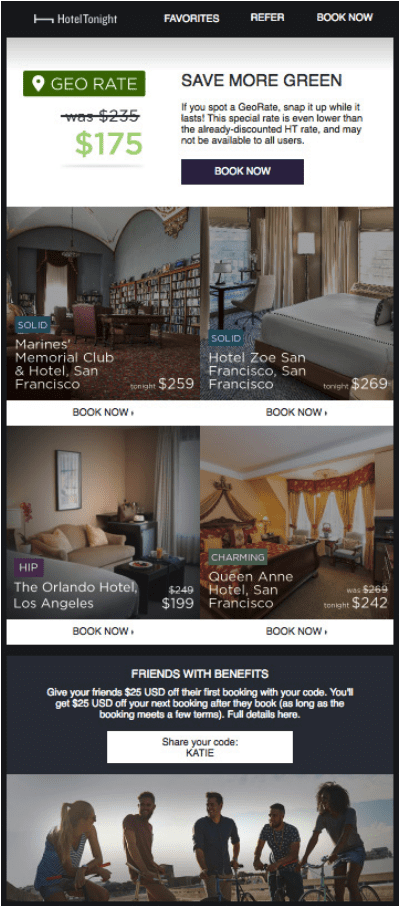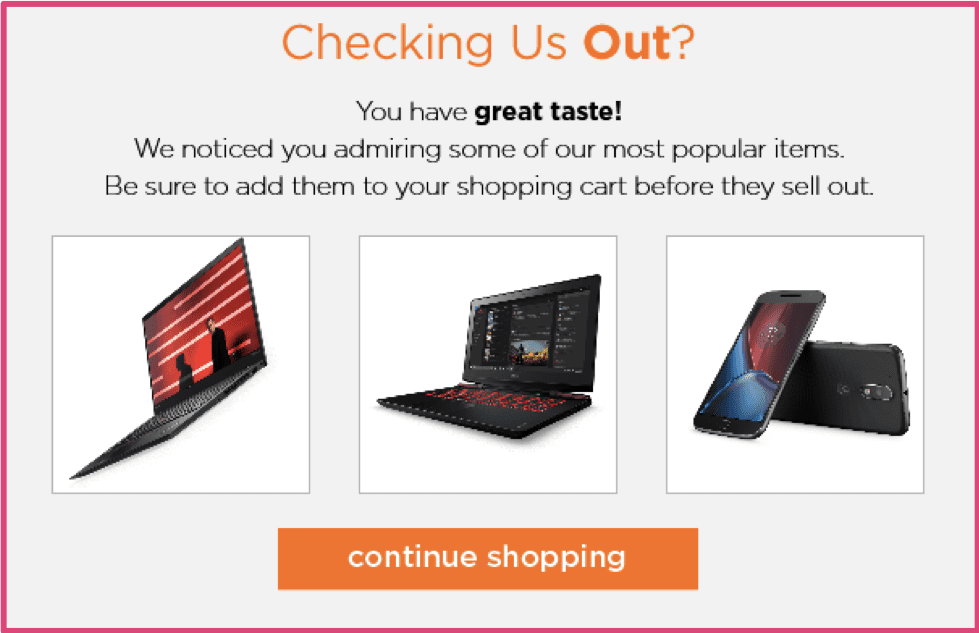The basis of any great customer experience isn’t complex or groundbreaking. It’s not even new. It’s simply treating your customers as individuals—as humans.
That’s why personalization is so high on most marketers’ to-do lists. According to Forrester, 89% of digital businesses are investing in personalization, but over a third of U.S. online shoppers agree that retailers should do more to offer personalized experiences.
But not just any personalization will do.
As customer expectations continue to rise, advanced personalization powered by customer data, valuable content, and real-time elements will be key for giving your brand the leading edge over your competitors. It’s the best way to treat your customers like the individuals they are.
But true, 1:1 personalization is easier said than done. As marketers, we’re always one broken link away from losing a long-time customer. That’s why we need to be diligent about consistently creating those experiences.
Here are six common but avoidable personalization mistakes that every marketer should steer clear of.
1. Not keeping your data up-to-date
One of the first steps for created a highly personalized campaign is aligning your data with your goals—and ensuring that your data is up-to-date. To do that, ask yourself these questions:
- What kind of data do I already have?
- Is there any additional data I can activate, or data I’m not fully leveraging yet?
- Where does all of my data live?
After you’ve assessed all the data you’ll be using, you’ll want to make sure it’s current and that it makes sense in your campaign. For example, if the goal of your campaign is to spotlight your top-tier rewards members and encourage them to use their rewards points, you would want to define what makes a top-tier member to ensure you’re pulling the correct data for each customer.
Without up-to-date customer data, you risk sending inaccurate information to your most loyal customers. Those VIP customers are your biggest brand advocates and influencers. They have sway over other consumers via social, and they’re the last people that you want to annoy with a poor experience.
2. Forgetting to include default content
Okay, but what if you are lacking a datapoint for a small number of your customers? Not to worry; your campaign isn’t doomed. You just need some default content.
Default content (or fallback content) is critical for any personalized campaign. It’s like your marketing safety net, enabling you to create great customer experiences even if you’re missing information for certain fields from a customer.
For example, if you’re an airline that wants to show your customer’s travel habits for the last year and they have all the necessary fields available for your message except for one, you can use default content that drives them to check out a more generic promotion.
Before you create your default content, there are a few things you should keep in mind:
- Your default content should apply to all of your customers, no matter when they open your email or login to your app. This could be a promotion for a current site-wide sale or a call-to-action for your customers to visit a specific landing page.
- It should make sense in the context of your message. If you’re a retail brand targeting top-tier buyers, it may not be appropriate for your default content to link to your budget products.
- Don’t forget to test your default content. Because default content for your default content is not a thing.
3. Including inaccurate or expired information
A personalized campaign is wonderful, but if that campaign contains inaccurate or expired product information, you may see subscribers opt-out entirely.
Real-time information like product inventory or live pricing is ideal for personalized email campaigns. With real-time pricing, you can pull live product prices directly from your website into your emails. So if you’re a travel marketer, you can rest assured that your customers are always seeing the most up-to-date property prices, no matter when they open your email.
When HotelTonight added real-time pricing and inventory to their emails, they saw huge lifts in engagement, along with a 26% lift in conversion rates. Their customers loved accessing a wealth of real-time information right in their inbox, and as a result, HotelTonight saw thousands of dollars in incremental revenue.


HotelTonight achieved a 26% increase in conversion rates by using real-time pricing and inventory.
4. Formatting faux-pas
Forgetting to optimize your personalized content for all devices can be a dealbreaker for your customers. This is especially true for any data or image personalization you use, like graphs or instances where you overlay a personalized message over another image.
To avoid formatting issues, work closely with your designers to ensure that your personalization is flawless, no matter what images you use. Testing and optimizing across devices is key, so it’s worth using growth marketing platforms like Iterable that can preview across devices and email clients to add an extra layer of protection.
Finally, get an extra set of eyes on each and every message. This could be someone outside your team who you can trust to give you an honest opinion.
5. Neglecting to maximize your customer data
You already know that your customers expect (and deserve!) so much more than a simple, “Hi, [name]!” In fact, according to Digital Trends, 73% of people say they prefer to buy from brands that make shopping experiences relevant to them. But if you’re not maximizing your data, your personalization could fall short.
One way to enhance your personalized emails is with real-time behavioral data. This could be recently viewed products on your website, recommendations for similar products, or popular products that are selling fast.
Behavioral data can transform a generic promotion into a relevant, 1:1 experience that drives real results. Case in point: when Lenovo added a behavioral content block to their newsletter, they saw a 17x higher CTR!


Lenovo achieved 17x higher CTR by adding behavioral content blocks to their email newsletters.
6. Poor timing
No matter what kind of personalized campaign you create, poor timing can put the kibosh on an otherwise excellent customer experience. Keep these tips in mind when you’re scheduling your next campaign.
- Time of day. Context is key for personalized messages. The right time will depend entirely on your audience, so test to find your best open times.
- Current, local events. Be mindful of current events when scheduling your campaign and avoid sending during major news events, like natural disasters that are relevant to the people you’re targeting with your campaign.
- Common sense. If the goal of your email is to issue a heartfelt apology or to simply empathize with your customers, it is not the time or place to be promotional. But it happens, as we saw with the recent Mario Batali email snafu. You don’t want to be that guy.
- Your customer’s place in the funnel. You wouldn’t send a 101-style product tutorial to users of five years or more, and you wouldn’t offer first-time buyer promotions to people who are already customers. Mapping your personalized content and promotions to your customer’s stage in the funnel is key.
Marketing personalization is incredibly powerful for cultivating lasting customer relationships. It requires careful planning—not only to align your strategy with your business goals, but also to ensure you’re creating the best personalized experience possible for your customers.
To learn more about creating amazing personalized content experiences, check out our ebook: “Movable Ink’s Solutions for Content Sourcing.”































